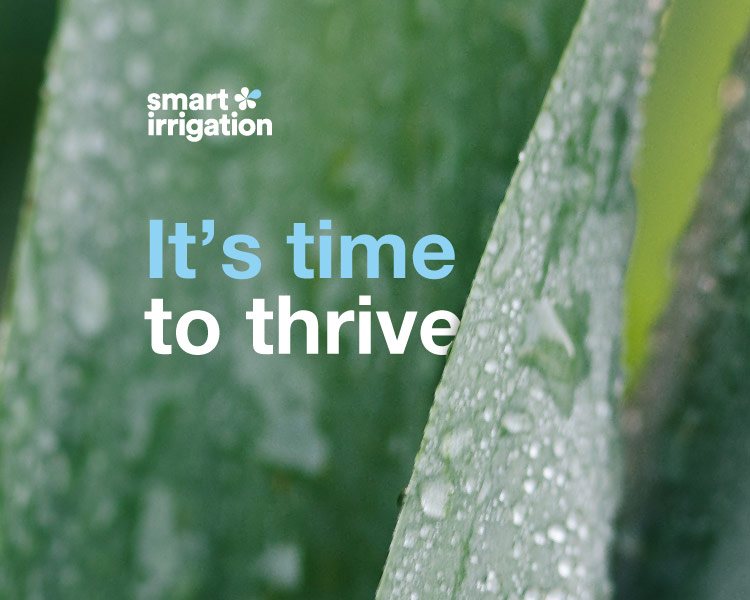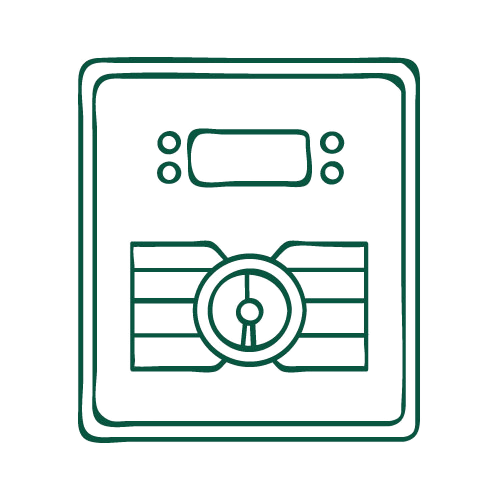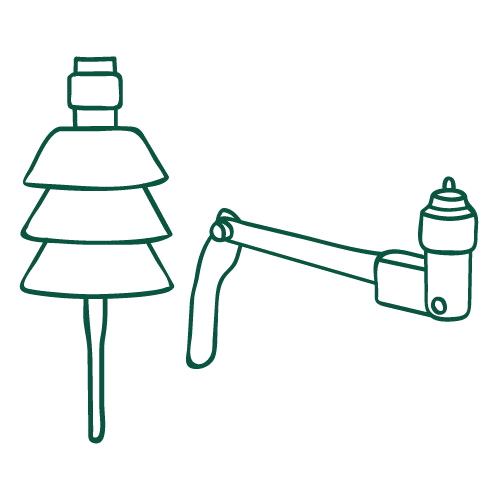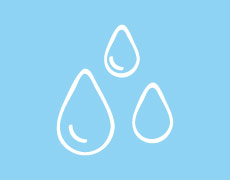- Home
- Smart Irrigation
Smart Irrigation

Say hello to Smart Irrigation.
The clever way to manage water effectively.
Smart Irrigation modernises water management with innovative products and methods that mean healthier gardens, lower water and energy use and less maintenance. By delivering just the right amount of water at the right time, Smart Irrigation ensures a thriving, lush landscape that you can be proud of for years to come.
Save Time
Smart Irrigation automates watering. Don’t waste time on confusing equations and schedules. Invest in a system and make it easy to keep your landscape healthy.
Save Water
Smart Irrigation systems can cut down water usage by up to 50% compared to conventional systems, by only watering when and where it’s needed.
Save Money
Being smart with water directly correlates with lower energy use. That means you’ll have lower water and energy bills for years to come.
Ready to get smart? Meet the DREAM TEAM!
Dripline

Minimises evaporation and water waste due to wind, runoff and overspray. Dripline delivers water directly to where the plants need it most – their roots.
Pressure Regulated Pop-Up Sprays &
Rotors

Maintains pressure at an optimum level, improving the efficiency and evenness of water distribution. They make sure every part of the garden is hydrated.
Automatic Smart Controller

Water based on need rather than time. The automatic smart controller is the brains of the operation, allowing you to input data specific to each zone, including soil, plant and sprinkler type.
Rain Sensor & Weather Station

Connects with your controller, taking into account the current weather conditions and adjusting the watering to suit, such as shutting off the system when it rains.
Let’s get real
Smart Irrigation gives us an opportunity to save water and positively contribute to the environment. These videos give you an insight into why Smart Irrigation is important, along with a great intro to smart controllers and weather stations.
Take Smart Irrigation to the next level with these top tips.
A Smart Irrigation system can practically run itself once set up. However, there are a few things you can do to maximise your system’s longevity and your garden’s success.
Use more mulch
Just 5-10cm of mulch helps to substantially retain soil moisture, slow evaporation and protect roots from overheating. By using mulch, you can also reduce and even eliminate weeds that compete with landscape plants for moisture, nutrition and sunlight.

Create hydrozones
Establish separate areas within the landscape where plants are grouped based on their water, soil and sun requirements. This simplifies the irrigation scheduling and ensures each plant is receiving the optimal amount of moisture, leading to a better landscape performance.

Minimise evaporation
Irrigating when the sun is low, winds are calm, and temperatures are cooler can minimise evaporation by 30%. Shade cast by trees can also cool the landscape by as much as 20⁰C, reducing heat building and water evaporation from the soil.

Apply deep and infrequent watering
To ensure water penetrates to the root level, it is important to apply a deep and infrequent watering pattern. This means the water reaches further into the soil. By doing this, the plant roots reach deeper into the soil in search of water, creating a healthy root system that can withstand drought.

Little plants are big winners
Many people look to large plants and shrubs when planning their landscape. While super-sized plants create big impact, they also consume large quantities of water. If you go smaller, you’ll save big – not only in nursery costs, but also on your water bill.

Smart maintenance
Get your irrigation system inspected for leaks, broken or clogged sprinkler heads and other damaged components on a regular basis. A leaking system can waste as much as 20,000 litres of water each year!

Smart design makes all the difference.
Reece Irrigation Design specialise in providing complete irrigation and water management solutions tailored to every project. From backyards, to agriculture and sports field, we do it right.
Myths Busted
Smart Irrigation has its share of common misconceptions. We’re here to set the record straight.
Isn’t a garden hose more efficient than installing an irrigation system?
No. You can’t regulate water use with a garden hose. Sometimes you’ll use too much water, other times you’ll probably under-water. This can not only waste water, but stress plants as well. Smart Irrigation eliminates waste and creates a healthier garden.
Smart Irrigation sounds like it would be very complicated.
No. It’s true that the initial setup is more complex and requires some amount of thought. But with proper design and professional installation you’ll enjoy the long-term benefits. Reduced water bills and a greener garden without any need to fiddle with the controls.
More water is better, right?
No. That attitude can quite literally drown your plants! When the soil is too wet, plants suffer a lack of oxygen. This can then lead to root death, which will eventually kill your plants. Additionally, over-watering can damage surrounding hardscapes like paths and driveways, requiring expensive repairs.
Smart Irrigation sounds like it would be expensive.
No. Think of it as an insurance policy for your garden. The upfront investment is a little more than traditional irrigation, but the payoff is an automatic system that will quickly pay for itself in water savings and reduced plant loss.
Will I have to do extra work?
No. Keeping a landscape lush and healthy doesn’t have to be hard. After the initial setup, a Smart Irrigation system practically runs itself. It’s a lot less work than the old manual style of irrigation.